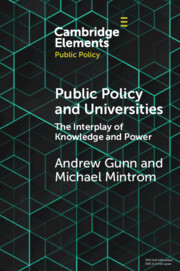Element contents
Public Policy and Universities
Published online by Cambridge University Press: 17 May 2022
Summary
- Type
- Element
- Information
- Series: Elements in Public PolicyOnline ISBN: 9781108645867Publisher: Cambridge University PressPrint publication: 09 June 2022



